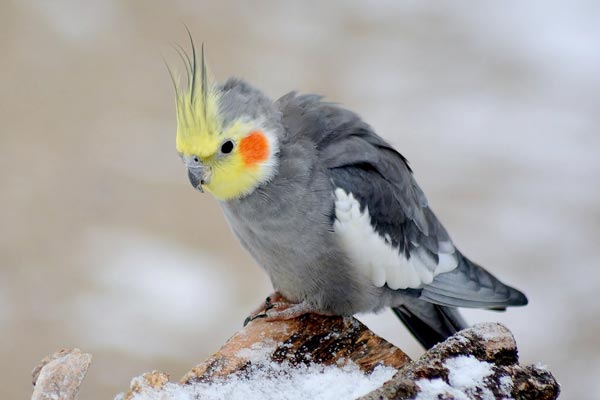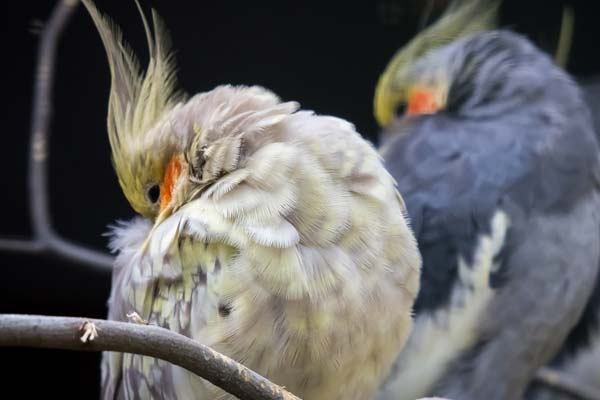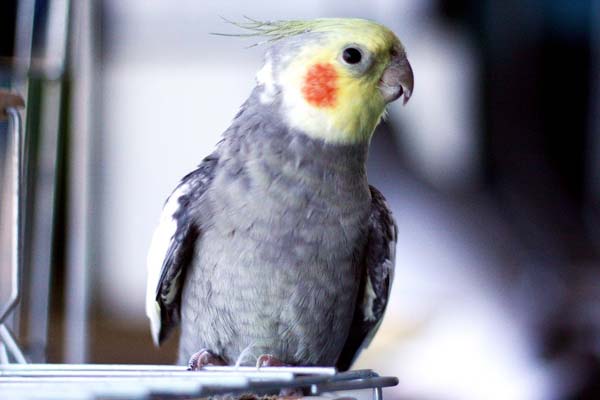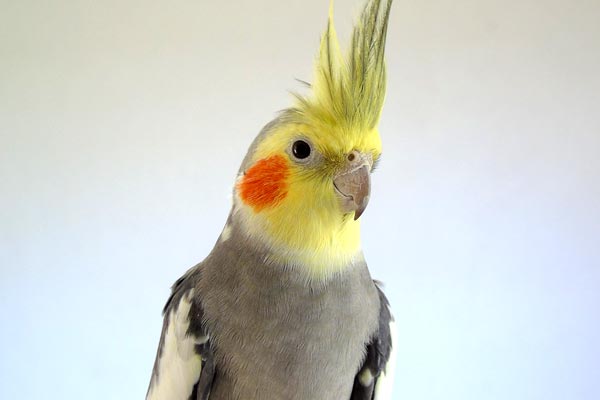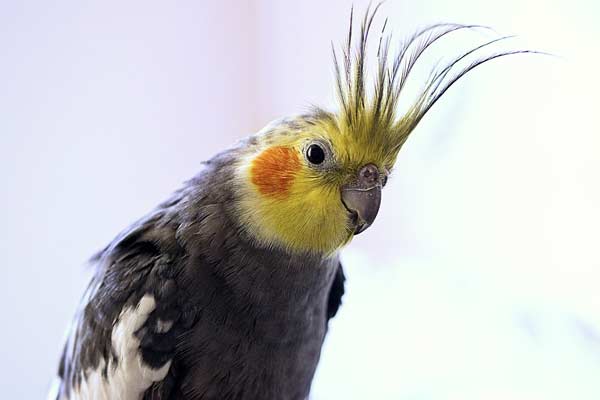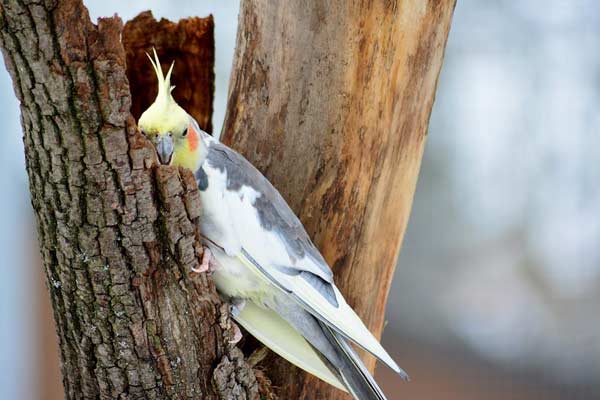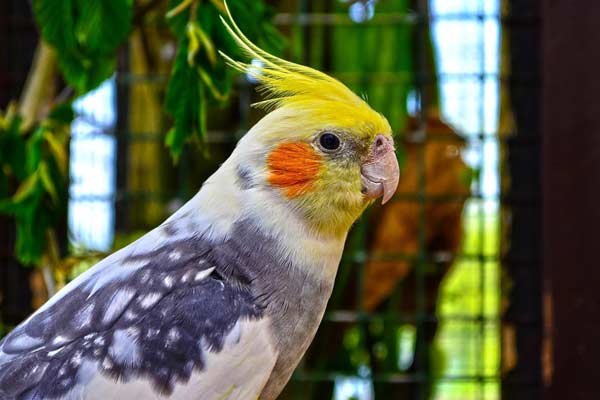Cockatiel Molting: What to Expect and How to Help Your Pet
Cockatiel molting is a natural process where your pet sheds old feathers and grows new ones. This process usually occurs between 6-12 months of age and can continue once or twice a year for the rest of their lives.
During this time, your bird may experience some discomfort, but with the proper care, you can help them have a smooth and healthy molting experience.
Knowing what happens when your bird molts make it simple to spot the signs and give your feathered buddy the necessary care.
In this guide, we’ll explore the reasons behind molting, how to identify when your cockatiel is molting, and what you can do to help them during this time.
We’ll also discuss potential issues during molting and provide solutions to help your bird stay healthy and comfortable.
Key Takeaways
- Cockatiel molting is a natural process where your pet sheds old feathers and grows new ones.
- Molting usually occurs between 6-12 months of age and can continue once or twice a year for the rest of their lives.
- Understanding the signs of molting and providing appropriate care can help your bird have a smooth and healthy molting experience.
What Is Cockatiel Molting?
Cockatiel molting is a natural process in birds to replace old feathers with new ones. This process usually happens 2-3 times yearly and lasts several weeks. Molting is essential to a cockatiel’s life cycle as it helps maintain healthy feathers.
Feathers are made of keratin, a protein in human hair and nails. Feathers protect birds from the environment, help them fly, and regulate their body temperature. Cockatiels preen their feathers to keep them clean and in good condition.
During molting, cockatiels shed their old feathers and grow new ones. The process can be uncomfortable and irritable for the bird, and owners may notice changes in their behavior. Cockatiels may sleep more than usual since they need lots of nutrition and energy to create new feathers.
Nutrition is crucial during molting, and a diet rich in protein, iron, and calcium is recommended. Owners can provide fresh fruits, seeds, and conditioning foods like egg whites to support their bird’s health. A calcium block can also be offered to help grow new feathers.
Owners should provide a warm and secure environment for their pet cockatiel during molting. The room temperature should be between 75° and 80° during heavy shedding. Owners can also encourage preening activities and provide a mist bath to help with itchiness.
It is essential to monitor cockatiels during molting for any signs of abnormal feather growth or bleeding. A blood feather, a developing feather with a blood supply, can be vulnerable and may need to be removed by an avian veterinarian. Feather plucking can also occur during molting, and owners should seek advice from a veterinarian if this behavior persists.
In the wild, cockatiels molt to replace old feathers with new ones. Baby feathers are replaced by developing feathers, and wing and tail feathers are eventually replaced. Molting helps birds maintain their plumage and flight capabilities.
Cockatiel molting is a natural and necessary process that occurs in birds. Owners can support their bird’s health during molting by providing proper nutrition, a warm and secure environment, and monitoring for any signs of abnormal feather growth.
Why Do Cockatiels Molt?
Cockatiels molt for several reasons, including maintaining healthy feathers, regulating body temperature, adapting to seasonal changes, and preparing for the breeding season. Molting is a natural process that involves shedding old feathers and growing new ones. Feathers are made of keratin, a protein that birds use to protect themselves from the environment and preen to keep them clean.
Feeding your bird a nutritious protein, calcium, and iron diet is essential for growing strong and healthy feathers. Owners should provide their pet cockatiel with a balanced diet of fruits, seeds, and conditioning foods.
Fresh vegetables and egg whites are also recommended to ensure a well-rounded diet.
Cockatiel molting occurs in cycles and typically happens twice a year in the spring and fall. During this time, birds may experience discomfort and become irritable. Owners should provide their birds with plenty of activity, water, and rest periods to help them through this process.
It is important to note that abnormal molting can signify illness or stress. If a cockatiel is experiencing heavy shedding, bald spots, or bleeding, it is recommended to seek the advice of an avian veterinarian. Feather plucking and abnormal molting can signify a sick or stressed bird.
During molting, birds develop pin feathers and new feather growth covered in a keratin sheath. These feathers can be itchy and uncomfortable for the bird. Owners can help their pet by providing a mist bath to help soothe the skin and relieve any itchiness.
In the wild, cockatiels adapt to seasonal changes and maintain their plumage for flight and security. During the breeding season, birds will molt to prepare for nesting and egg-laying. Owners should provide their pets with a comfortable environment at room temperature that mimics their natural habitat.
Cockatiel molting is a natural process essential for feather health and growth. Owners should provide their birds with a healthy diet, plenty of activity, and rest periods, and it’s a good idea to ask a bird doctor for help if they notice abnormal molting or feather plucking.
A cockatiel can maintain healthy feathers and live a happy and comfortable life with proper care.
Signs Your Cockatiel Is Molting
Some common signs that your cockatiel is molting include increased feather loss, new pinfeathers emerging, changes in behavior, such as increased preening or irritability, and reduced energy levels or appetite. Molting is a natural process for all bird species, including cockatiels.
During molting, your cockatiel’s old feathers will fall out, and new ones will grow. This process can be stressful for your bird, and monitoring its health and behavior is essential.
If you notice your cockatiel scratching or biting at its feathers excessively, it could be a sign of itchiness caused by new feather growth. To help alleviate this discomfort, you can provide your bird with a mist bath or offer them fresh vegetables and egg whites, which are high in protein and can help with feather growth.
Ensuring your bird gets enough calcium is essential, as this mineral is critical for healthy feather growth. You can provide your bird with a calcium block or conditioning foods rich in vitamins and minerals.
If you notice any abnormal molting, such as bleeding or bald spots, it’s essential to consult with an avian veterinarian to ensure that your bird is not sick or stressed.
Additionally, providing your bird with rest periods and monitoring their preening activity can help prevent feather damage and promote healthy feather growth.
In the wild, cockatiels molt twice a year, but pet cockatiels may molt more frequently due to their indoor environment. Providing your bird a comfortable and stimulating environment is vital to prevent stress and confusion during this vulnerable time.
Overall, understanding the signs of molting and taking steps to promote healthy feather growth can help ensure that your cockatiel stays happy and healthy.
How to Help Your Cockatiel During Molting
Support your cockatiel during molting, and there are several things you can do to make the process easier for your bird. Here are some tips to consider:
Provide a balanced diet with added nutrients and protein: During molting, your cockatiel needs extra nutrients and protein to support feather growth. Offer fresh vegetables, fruits, and conditioning foods such as egg whites or a calcium block to ensure your bird gets the necessary nutrients.
Offer regular baths or misting to help with preening and feather growth: Regular bathing or misting can help your bird with preening and feather growth. This can also help alleviate any itching or discomfort your bird may be experiencing during molting.
Maintain a consistent environment with proper temperature and humidity: During molting, your cockatiel may be more vulnerable to stress and illness. Maintaining a consistent environment with appropriate temperature and humidity is vital to help keep your bird healthy and comfortable.
Be patient and understand behavioral changes: Molting can be stressful and confusing for your cockatiel. Be patient and understand any behavioral changes your bird may exhibit during this time.
Avoid handling or petting your cockatiel too much, as this may cause discomfort: Your bird’s feathers may be more sensitive during molting, so it is important to avoid handling or petting your bird too much. This can cause uncomfortable or even pain for your bird.
Remember that molting is a natural process for all birds, including cockatiels. It is crucial to provide your bird with the support and care they need during this time.
Suppose you notice any abnormal molting or bald spots. In that case, it is vital to seek the advice of an avian veterinarian to ensure your bird is healthy and receiving the proper care.
Potential Molting Issues and Solutions
While molting is a natural process for cockatiels, some issues may arise. Here are some common molting problems and their potential solutions:
Excessive Feather Loss or Bald Spots
If you notice your cockatiel losing excessive feathers or developing bald spots, it may indicate an underlying health issue. Some potential causes of excessive feather loss include poor nutrition, stress, parasites, or hormonal imbalances.
It is essential to consult with an avian veterinarian to address this issue. They may recommend a change in diet, stress reduction techniques, or medication to treat any underlying health conditions.
Prolonged or Irregular Molting Periods
While molting typically lasts a few weeks, some cockatiels may experience prolonged or irregular periods. This can be caused by poor nutrition, stress, or hormonal imbalances.
Ensuring that your cockatiel is receiving a balanced diet and not experiencing undue stress is crucial to address this issue. If the problem persists, consult with an avian veterinarian for further advice.
Damaged or Broken Feathers
New feathers may be fragile and prone to damage or breakage during molting. This can be caused by rough handling, improper nutrition, or underlying health issues.
Handling your cockatiel gently and ensuring they receive a balanced diet is crucial to address this issue. If you notice any damaged or broken feathers, consult an avian veterinarian for advice on promoting healthy feather growth.
If you notice any of these issues during your cockatiel’s molting period, it is essential to consult with an avian veterinarian for advice and possible treatment options. Your cockatiel can successfully navigate molting and emerge with healthy, beautiful feathers with proper care and attention.
Conclusion
Cockatiel molting is a natural process that happens to all bird species. It is a necessary part of your pet’s life, as it allows them to replace old feathers with new ones, which play a crucial role in protecting them from the elements and helping them to fly.
A responsible pet owner must understand the signs of molting and provide your cockatiel with the necessary care and support during this time.
This includes offering a healthy and balanced diet, providing a comfortable and stress-free environment, and always having fresh water and chances for them to take a bath.
During molting, your cockatiel may experience discomfort and irritation, leading to feather plucking or pulling. To prevent this, providing your pet with plenty of toys and activities is vital to keep them occupied and mentally stimulated.
In addition, consider supplementing your cockatiel’s diet with vitamins and minerals to support healthy feather growth and development. Consult with your veterinarian to determine the best options for your pet.
By taking these steps, you can help your cockatiel maintain healthy feathers and enjoy a comfortable molting experience. Remember, proper care and attention are crucial to ensuring your pet remains healthy and happy.

